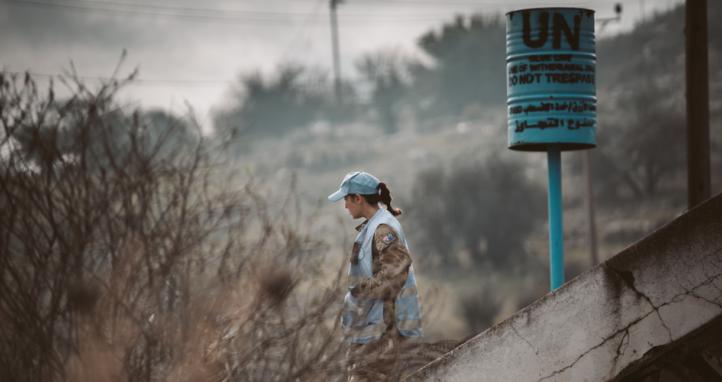While International Women’s Day 2018 last month was an occasion to celebrate women’s achievements in Australia and internationally, it was also used by many to denigrate women in the military. I was pumped in the morning after speaking at an event in Melbourne about the United Nation’s (UN) approach to gender equality in peacekeeping, and UN Women’s efforts in peace and security and security sector reform. By the evening, I was deflated after reading some ill-informed, biased and downright crude comments on a Facebook post relating to the targeted recruitment of women, specifically for combat / infantry roles, in the Australian Defence Force (ADF).
Nowhere is it more evident that we must #pressforprogress to ensure full equality for women, gender parity, and elimination of the gender pay gap, than in our armed forces. The removal in 2016 of gender restrictions on ADF combat role employment categories (the final barrier to women’s full participation) has been instrumental in creating an environment that supports the aspiration of all members to contribute fully to ADF capability.
The decision by the Australian Government to remove gender restrictions was about maximising capability by opening up a wider recruitment pool of talent for combat roles. This decision gives effect to the standards of equal opportunity expected and held within our society and laws, and provides an avenue for ability, not gender, to be the deciding factor when determining which roles ADF members can serve in. The recruiting of women into these roles also ensures the greatest operational effect, particularly in conflict environments, through a diverse workforce.
Special measures, such as targeted recruitment of women, are merely righting the historical disadvantage suffered by women in the preceding decades of military service. These measures are also addressing the ADF's gender pay gap (of 5%), a function of women being disproportionately represented in lower ranks and in occupational groups that are in the lower pay grades and in lower pay increments, rather than any systemic difference in the salaries across gender.
We want our well educated, smart and impressive young Australian women to access all roles, ranks, and levels previously denied to them. Noting that women comprise nearly fifty per cent of Australia’s population, and that there is a dwindling of the traditional pool of Anglo-Saxon men from which to recruit, recruiting women, and specifically through targeted measures to increase numbers (overall as well as in male-dominated employment categories), is the reality if the ADF wants to meet its strategic defence commitments. This approach has seen the participation levels for women in the ADF increase from 14.4 percent in 2012-13 to 16.7 per cent in 2017 (2.3 per cent); this is significant given that participation rates for women only increased 1 per cent in the preceding decade.
The issue of fitness for combat roles always arises in discussions about women, and usually assume that standards have to be lowered in order for women to succeed. Fitness for ADF employment categories are driven by scientifically-developed Physical Employment Standards (PES), that optimise the matching of personnel capabilities to tasks, regardless of trade classification, rank, age or gender.
No one has suggested lowering the physical fitness standards for women (and men) and clearly all men and women need to meet the PES standard. The PES has been created to eliminate previous work performance standards that can lead to individuals either being unnecessarily excluded from a role or selected for a position for which they are unsuited. PES for combat roles were developed in 2010-11, and it can therefore safely be assumed that women recruited into these roles are assessed as being able to meet the required physical standards.
Lastly, the need to include women in all roles to prevent, respond to and resolve conflict, has been made quite evident through operations in Afghanistan, Iraq and Syria. The benefit of women in infantry / combat units is well researched and documented, and the growing trends of sexual and gender-based violence against women and girls, as well as intelligence gathering, are just two examples that demonstrate the need for women’s inclusion in peace and security efforts, in order for an armed force to more effectively respond. Women’s participation in armed forces and peacekeeping is a key element of the UN and North Atlantic Treaty Organisation’s (NATO) Women, Peace and Security agenda, and of their mandates in operations and peacekeeping missions. Australia, as a UN member state and NATO partner nation, is well aligned with this approach.
Women’s participation in the ADF is crucial to its survival, is crucial to operational effect, and our efforts are well regarded in the international community. Equality is a right to be enjoyed by both women and men; it’s time for the naysayers to stop being part of the problem and start supporting the solution. More information about women in the ADF, including 2017 data, can be obtained here.









